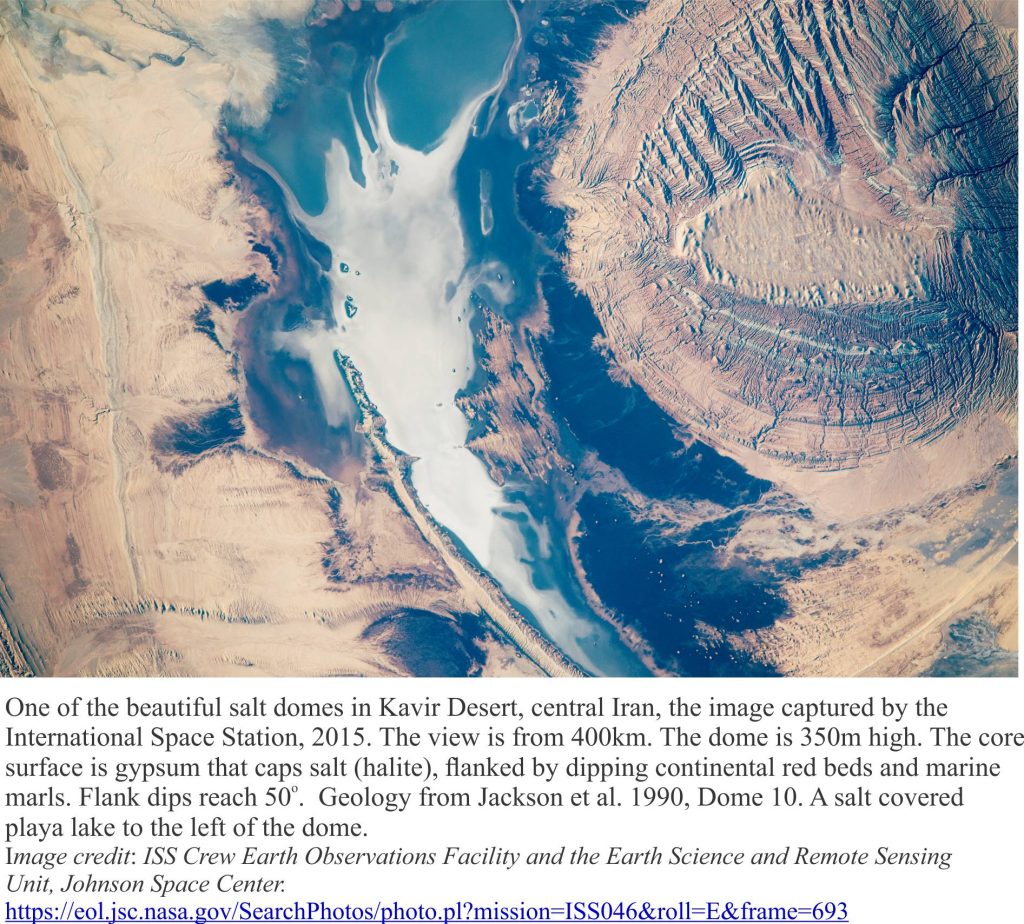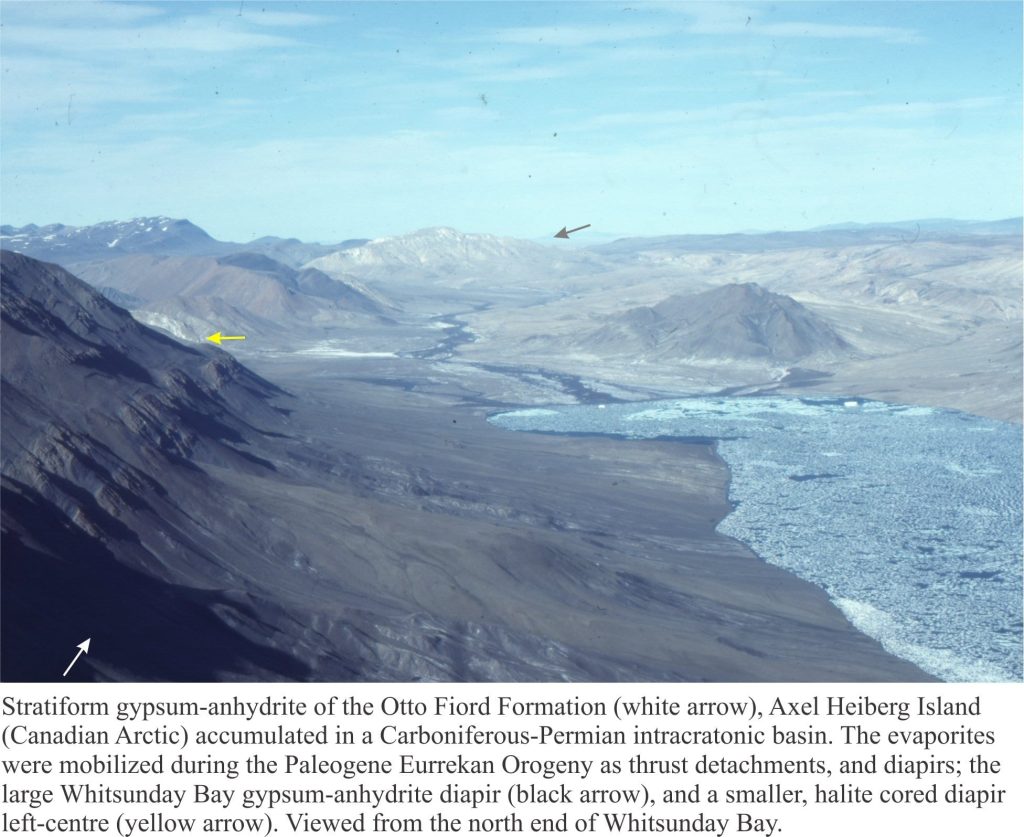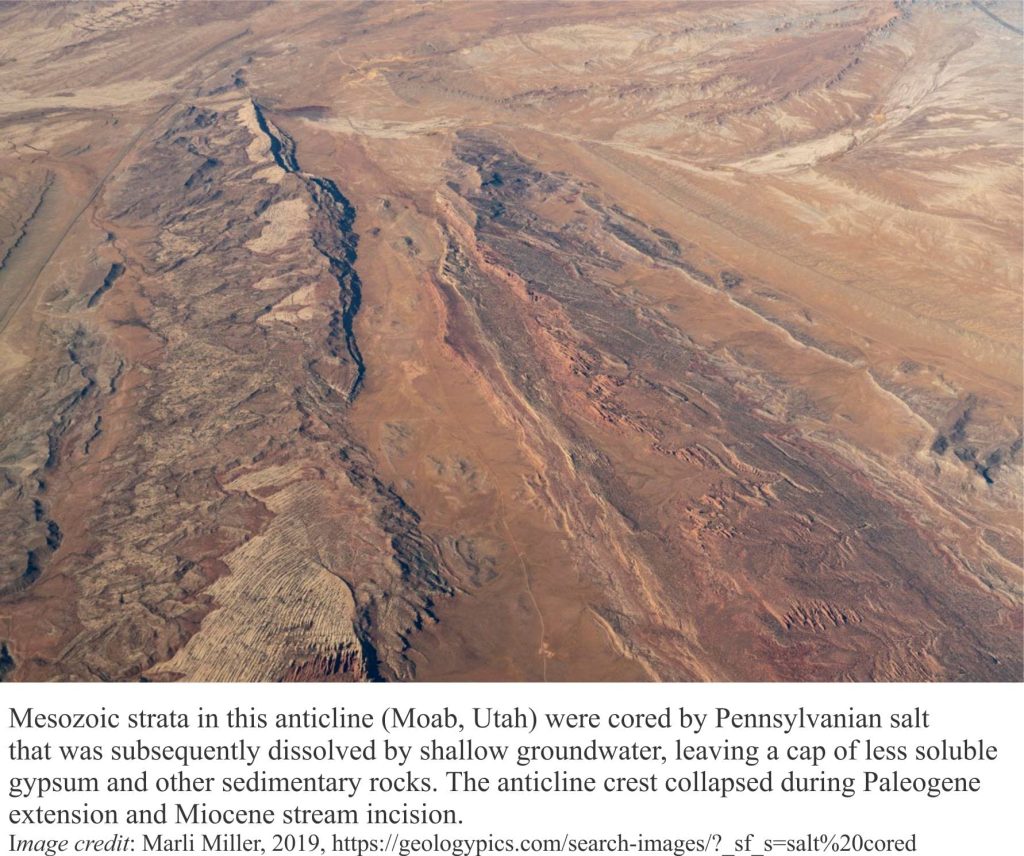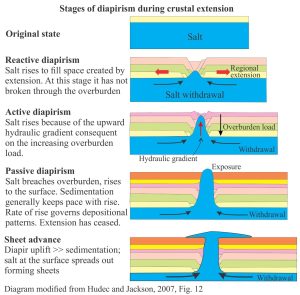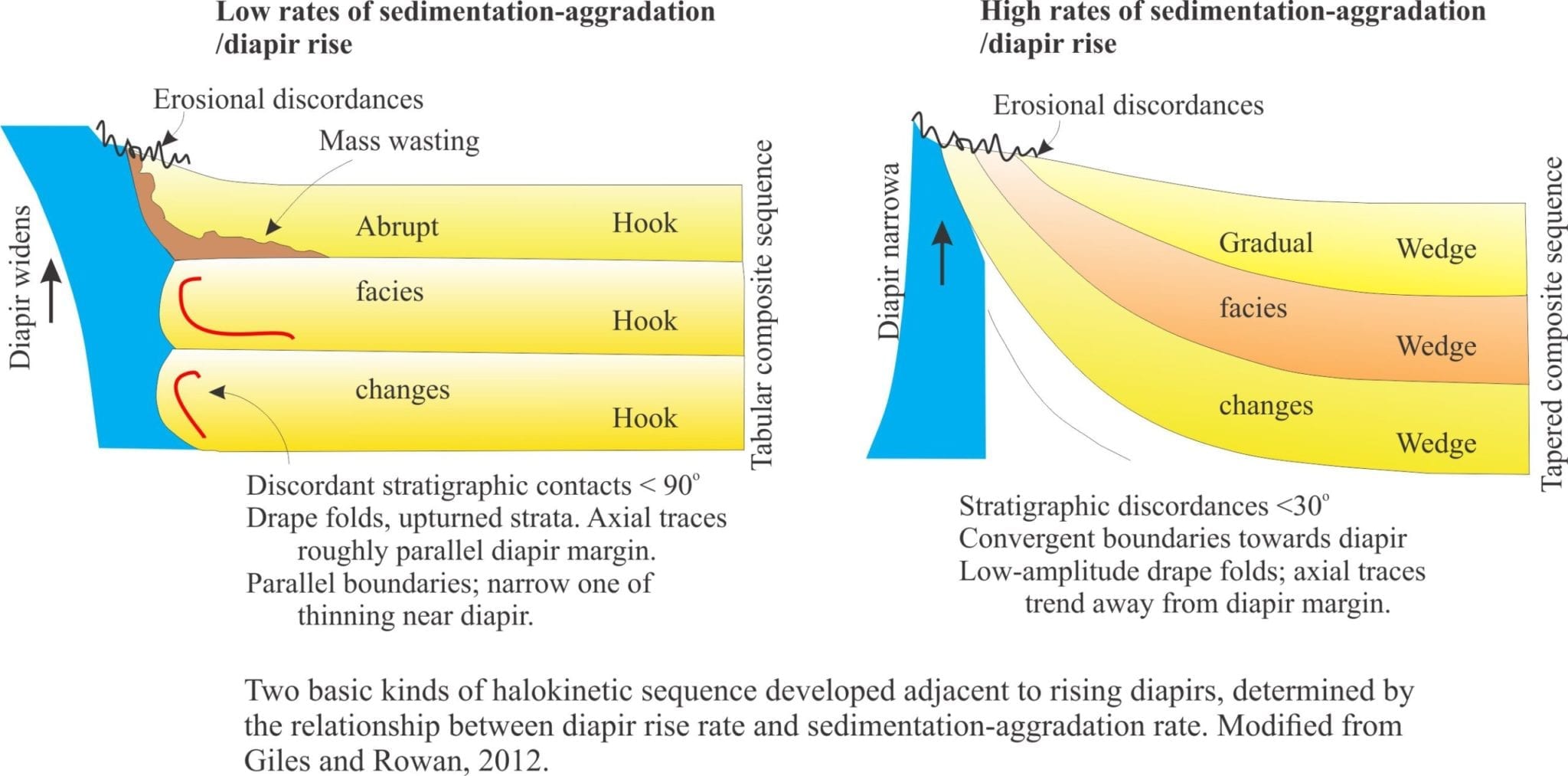This post focuses on the initiation and growth of diapirs
This is part of the How To…series on evaporites
Salt layers buried beneath a pile of sedimentary rocks are inherently unstable. The effects of buoyancy, gravity-induced hydraulic gradients (i.e. potential energy), tectonics, and thermal expansion provide the driving forces for salt flow. However, for a diapir to grow, these forces must be sufficient to break through and displace the salt overburden – like any intrusion, whether magmatic, salty, or sedimentary (as in sedimentary dykes), the intruding body must have enough force to push the host rock aside.
Diapers come in many shapes and sizes, depending on salt layer thickness (if it’s too thin salt withdrawal will rapidly deplete the supply), overburden thickness and mechanical strength, salt density, the tectonic environment (extension, contraction, strike-slip), and the relationship between the diapir surface and active sedimentation. Diapir geometries include the common columnar types that may evolve to bulbous or teardrop forms, salt walls, salt-cored anticlines, and sheets. Cross section dimensions are measured in 100s of metres to kilometres, and vertical extents in kilometres; salt walls and anticlines have strike lengths up to several tens of kilometres; one salt wall in Kavir Desert, Iran is 52km long (M. Jackson et el, 1990). An example of a collapsed salt anticline in the Paradox Basin near Moab, Utah is shown below.
The initial impetus for study of salt diapirs derived mainly from hydrocarbon exploration, when it became apparent that diapir rise and stratigraphic terminations provided excellent oil trapping mechanisms.
This post will focus on diapirs in extensional tectonic settings because they incorporate some of the more common growth attributes. For a more encyclopedic account of diapirs including those formed during regional shortening and strike-slip, take a look at Jackson and Hudec, 2017.
Diapir initiation and growth
Diapir initiation and growth in extensional regimes are summarized in the following diagrams. The general case of symmetric extension is shown, but more complex asymmetric scenarios are also common.
The initial reactive diapirism responds to crustal thinning by filling the space between fault blocks. Advanced diapir piercement begins when the overburden is thinned to the point where it can be pushed aside by continued extension, salt intrusion, or both these processes. Blocks of overburden, or flaps, are shouldered aside by the buoyant salt. This is the active stage of diapirism, controlled primarily by gravity-induced hydraulic gradients, and is therefore independent of the externally driven extension. Blocks of overburden may be incorporated into the diapir, either by convective flow, or by flow caused by frictional resistance along the diapir margin. Active diapiric rise generally continues until the salt body reaches the surface – at this point the diapir begins to grow passively.
Passive growth occurs once the entire overburden column has been breached. Passive diapirs that reach the surface continue to grow in tandem with sedimentation that onlaps the salt surface, producing discordant depositional packages that have complex geometries. Exposed salt may be subjected to dissolution, erosion, and collapse of oversteepened flanks.
Katherine Giles and Mark Rowan (2012) have written an excellent account of halokinetic sequence stratigraphy. They recognise two fundamental kinds of halokinetic sequence – Hook sequences and wedge sequences – based on the style and extent of deformation associated with continued diapir rise, angular discordances at salt contacts. In describing these depositional units, they use standard sequence stratigraphic terminology for parasequences and sequences, and sequence-parasequence stacking patterns. Hook and wedge sequences may alternate over the life of a diapir. The distinction between these two stratal geometries provides some insights into the complexities of sedimentation associated with active diapirism.
Hook halokinetic parasequence sets have narrow drape folds, rotated in concert with diapir rise, that result in depositional discordances to 90o; these discordances shallow over about 200m from the salt margin (they are hook-like). Facies changes are abrupt close to the diapir, and there is a propensity for mass wasting such as slope failure and debris flows. Successive hook parasequence sets stack stratigraphically to form thick (several 100m), tabular, composite sequences.
Wedge parasequence sets are broader with shallower onlap discordances and gentle drape folds, and depositional discordances usually less than 30o. Lateral and vertical changes in sedimentary facies are less abrupt than is the case for Hook-type units. A stack of wedge parasequences produces a tapered composite sequence that thins towards the diapir.
The difference between the two types reflects:
- the rate of diapir rise (and formation of accommodation space) with respect to,
- the rate of sedimentation.
Tapered composite sequences develop when sedimentation rates are higher than diapir rise – in this situation drape folding tends to be gentle and depositional slopes close to the diapir are low, diminishing the possibility of mass wasting. In contrast, Tabular composite sequences reflect rates of sedimentation lower than the rate of diapir rise, which gives rise to higher depositional slopes close to the diapir margin, and increased susceptibility to failure.
Flow of salt at the surface
If diapir growth outstrips sedimentation the exposed salt may flow outwards to form an allochthonous sheet. Erosion and slope failure may produce salt debris that is incorporated into sediments, although it will be susceptible to dissolution.
The models of diapir growth described here are a simplification of most real-world occurrences, but, like any good model it provides a rational guide for teasing apart diapir history. Documentation of the growth of a salt wall offshore Brazil provides a nice illustration of the reactive to active transition, plus some of the complexities one is likely to encounter in any diapir study (Christopher A-L. Jackson et al, 2014). The reactive stage begins with crustal extension, differential loading, and formation of an anticline, that subsequently was breached by actively rising salt. At this stage, complex internal structures developed in the salt because of buoyancy- and friction-induced instabilities. Subsequent deformation involved shortening across the strike of the salt wall.
Related links
Mineralogy of evaporites: Salt tectonics
Mineralogy of evaporites: Marine basins
Mineralogy of evaporites: Saline lakes
Mineralogy of evaporites: Saline lake brines
Mineralogy of evaporites: Death Valley hydrology
References
K.A. Giles and M.G. Rowan, 2012. Concepts in halokinetic-sequence deformation and stratigraphy. In G.I. Alsop, S.G. Archer, A.J. Hartley, N.T. Grant, and R. Hodgkinson (Eds.). Salt Tectonics, Sediments, and Prospectivity. Geological Society of London, Special Publication 363, p.7-31.
M.R. Hudec and M.P.A. Jackson, 2007. Terra infirma: Understanding salt tectonics.Earth Science Reviews, v. 82, p. 1-28. Excellent summary. Available for downloading
C.A-L. Jackson, M.P.A. Jackson, M.R. Hudec, & C. Rodriguez, 2014. Internal structure, kinematics, and growth of a salt wall: In sights from 3-D seismic. Geology, v. 42, p. 307-310.
M.P.A. Jackson, R. R. Cornelius, C. H. Craig, A. Gansser, J. Stöcklin, C. J. Talbot, 1990. Salt Diapirs of the Great Kavir, Central Iran. Geological Society of America Memoir, v. 177. The Kavir is one of the classic salt diapir provinces with more than 50 structures. The memoir is now Open Access
M.P.A. Jackson and M.R. Hudec, 2017. Salt tectonics: Principles and practice. Cambridge University Press. An encyclopaedic compilation
